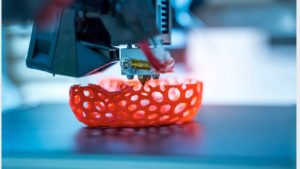Personalized medicine, already a primary area of focus for the most innovative healthtech companies, looks to reach new heights of quality with the advent of 3D printing and microfluidics. Many hospitals employ 3D printing labs to create surgical models and guides, and medical companies use the technology to design personalized prosthetics, orthotics, casts, and other assistive devices. Not only does 3D printing provide visualization that is unmatched in helping patients with personal health comprehension, but physicians can leverage its incorporation to gain more control over their patients' recovery processes.
Despite its obvious benefits and ease of use in modern medical applications, the technology's current level of implementation could be just the tip of the iceberg in terms of the opportunities it presents. Recognizing this, an assortment of small to medium-scale industries have dipped their toes into the global 3D printing medical devices market. In what has become a highly competitive space, organizations are working with local companies, expanding their tech portfolios, differentiating their products, and investing in extensive research campaigns as they vie for dominance. In a recent report, Transparency Market Research anticipated the market will be worth $3.513 billion by 2025, at a CAGR of 17.7%. That number would represent a drastic increase over its value of $713.3 million in 2016.
HP's Chief Strategy and Incubation Officer, Savi Baveja, said, “The demand is already substantial—the personalized medical solutions market, inclusive of personalized orthotics and prosthetics, is valued at approximately $10 billion—and the need is growing at an exponential clip. The WHO estimates that one billion people need assistive products today and more than two billion people around the world are expected to need at least one assistive product by 2030.”























